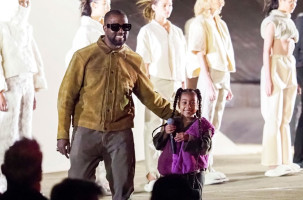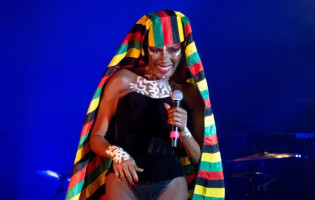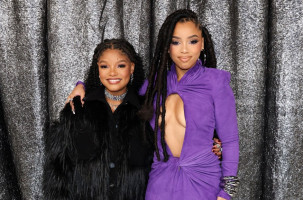"Zoom fatigue" is real, but so are the cost savings of introducing new acts remotely. Labels and artists are seriously reexamining what has long been a rite of passage in the genre.
"Video killed the radio star," The Buggles suggested at the dawn of the 1980s; now the COVID-19 bug might kill the radio promotion tour, which started that same decade.
When asked in the Billboard Country Power Players issue what changes from the pandemic era may become permanent, Starstruck CEO Narvel Blackstock predicted, "A lot of meetings will become Zoom meetings, and things like radio tours will probably never come back."
Blackstock's position is shared — in whole or in part — by many interested parties from numerous areas of the business, including labels, artists, managers and broadcasters. The tours, which send an artist to meet programmers and play in-person for them, are estimated to cost from $200,000 to $1 million in travel and entertainment expenses.
But with artists staying home during the pandemic and many radio stations banning outside visitors to avoid health risks, country labels have begun using Zoom and other virtual options to introduce their new acts to programmers. Such artists as Sony Music Nashville's Robert Counts and BBR Music Group's Elvie Shane have received an enthusiastic enough response in the new setting that Music Row is reexamining the value of the time and expense of traveling to individual stations.
"There will be cost savings because of this situation," says Warner Music Nashville senior vp radio and streaming Kristen Williams. "We've realized that we can do business smarter and faster, frankly. It takes a long time to go introduce a new band or a new artist. It takes a good couple of months, at least, to go and meet people face-to-face or travel the country and do performances for fans, whereas you can hit the same amount of people in two weeks doing it virtually."
The radio tour is unique to country music. Labels routinely send artists at the start of their career to visit dozens of stations — often exceeding 100 — in an attempt to get early buy-in. Programmers have come to expect a personal relationship with the genre's artists since the process became informally codified in the late 1980s. When an artist and PD click, it can make a big difference in those moments that a programmer has two records competing for the last slot on the playlist.
"Face-to-face, getting people to like you, it could be a great tie-breaker," notes Cox Media Group/Houston director of operations Johnny Chiang. "When Taylor Swift first came out — you know, the 17-year-old, big blond hair, first song's titled 'Tim McGraw'; great. But man, she charmed everyone. I mean, she's legendary."
The radio tour itself is legendary, too, though not always in the best way. Artists may visit multiple broadcasters in two or three cities on a single day and show up exhausted at a station, only to discover that many of the expected guests have schedule conflicts, the atmosphere is awkward or the executives text throughout the performance.
"Those radio tours are very expensive and, you know, contrary to popular belief, not everyone's paying attention," says KRTY San Jose GM Nate Deaton. "If I was a manager of an artist, I would look long and hard [at] paying that kind of money."
It's especially relevant to the artist and manager since labels consider the costs of the tour recoupable. Thus, the act quickly falls into a large financial hole.
At the same time, the process can pay long-term dividends. Dustin Lynch recalls that he was so financially strapped as a young artist that he routinely slept on friends' couches, so racking up debt with the label didn't necessarily make his wallet any leaner, and he picked up invaluable experiences along the way. He still communicates regularly with some of the programmers he met on that promotional tour, and the whirlwind of interstates and airports gave him a better sense of the marketplace he was attacking.
"That tour was probably the most stressful thing I've ever done in my life," he says. "But at the same time, because I grew up not really getting to travel [much], I hadn't seen any of the country. And so to pretty much visit every major city in the country in about six weeks was freaking crazy and awesome. And it gave me a perspective of exactly who I was writing for, you know, outside of a little bubble that I've grown up [in]."
The programmers see positives in giving early exposure to new talent, too.
"I could go down the list of artists that the first time that I saw them live, I'll never forget it," says Deaton. "The first time I saw Luke Combs was at The EXIT/IN in Nashville, and it's like, ‘Dude, this guy is a star.' Part of determining whether there's a star or something in there, you could only do onstage or in person."
Promotional tours are so baked in that not doing one can generate negatives. There are stories, perhaps apocryphal, of PDs who expressed interest in a single but were reticent to add it because they did not know the act. That, says Chiang, would be a dereliction of duty.
"If you're supporting a song just because you met the person, you like the person, that's backward," he notes. "Every country station out there should be playing Chris Stapleton, right? And talk about an introvert. It's highly unlikely that people are playing Chris Stapleton's song because ‘Man, we had a great time drinking with the guy.'"
That said, the radio promotion tour is so much a part of the business that nearly every major PD or music director has a story or two — or 20 — about a unique experience with a country artist. The advent of virtual visits doesn't change the desire to create a relationship; it merely changes the setting.
"In Zoom, you're still having a conversation. You're still bonding; you're still creating inside jokes and moments to reference the next time you see that person," says HARDY. "So a lot of it is very, very similar. Hell, you can even get drunk with the person if you want."
Artists have additional programmers to bond with, though, in the digital realm, and that impacts the significance of radio. Broadcasting is still an important means of exposure, but customers who are willing to spend money on a subscription for digital music or satellite radio demonstrate a willingness to invest in music, making them primary customers for artists and labels. Listeners who only use free AM/FM signals are more likely to be passive, nonpaying customers.
It's one more reason why it makes sense for labels to rethink the radio tour. They will certainly still court broadcasters, but likely use hybrid forms of outreach, establishing relationships at times via digital platforms first and meeting in the same physical space at a later date.
"The initial introduction may happen virtually, and then we follow up with more in-person [events], whether that's a return to the market physically to do a show for listeners or whatever it is," says Fusion Management/Red Light manager Daniel Miller. "I don't think it's a replacement, but I think the sequence changes a little bit instead of flying around the country to meet everybody."
The new reality has its challenges. Executives are already suffering from "Zoom fatigue," says Williams, and the success of the virtual model relies on a chain of technology noted for its bugs.
"We were launching Ingrid Andress' second single, and we had to go to her home personally and get her connected with much stronger Wi-Fi so that she would be able to actually get out and do these virtual performances," says Williams. "And rehearsal is key, because especially when you're trying to interact with multiple people on a call, they can be awkward. So I would recommend a lot of time figuring it out on the front end."
Thus, the coronavirus has country artists, labels and radio alike experimenting with video mediums as their relationships evolve.
"Everyone has had to adapt to new ways of doing things," says Sony Music Nashville executive vp promotions and artist development Steve Hodges. "It's a new experience all around."
This article first appeared in the weekly Billboard Country Update newsletter.
Click here to subscribe for free.





